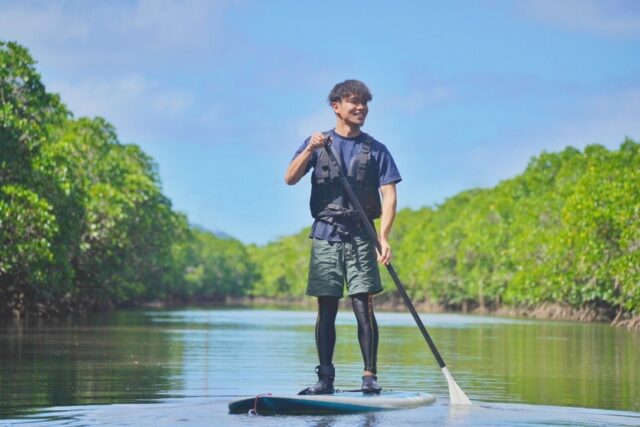Local Column
COLUMN
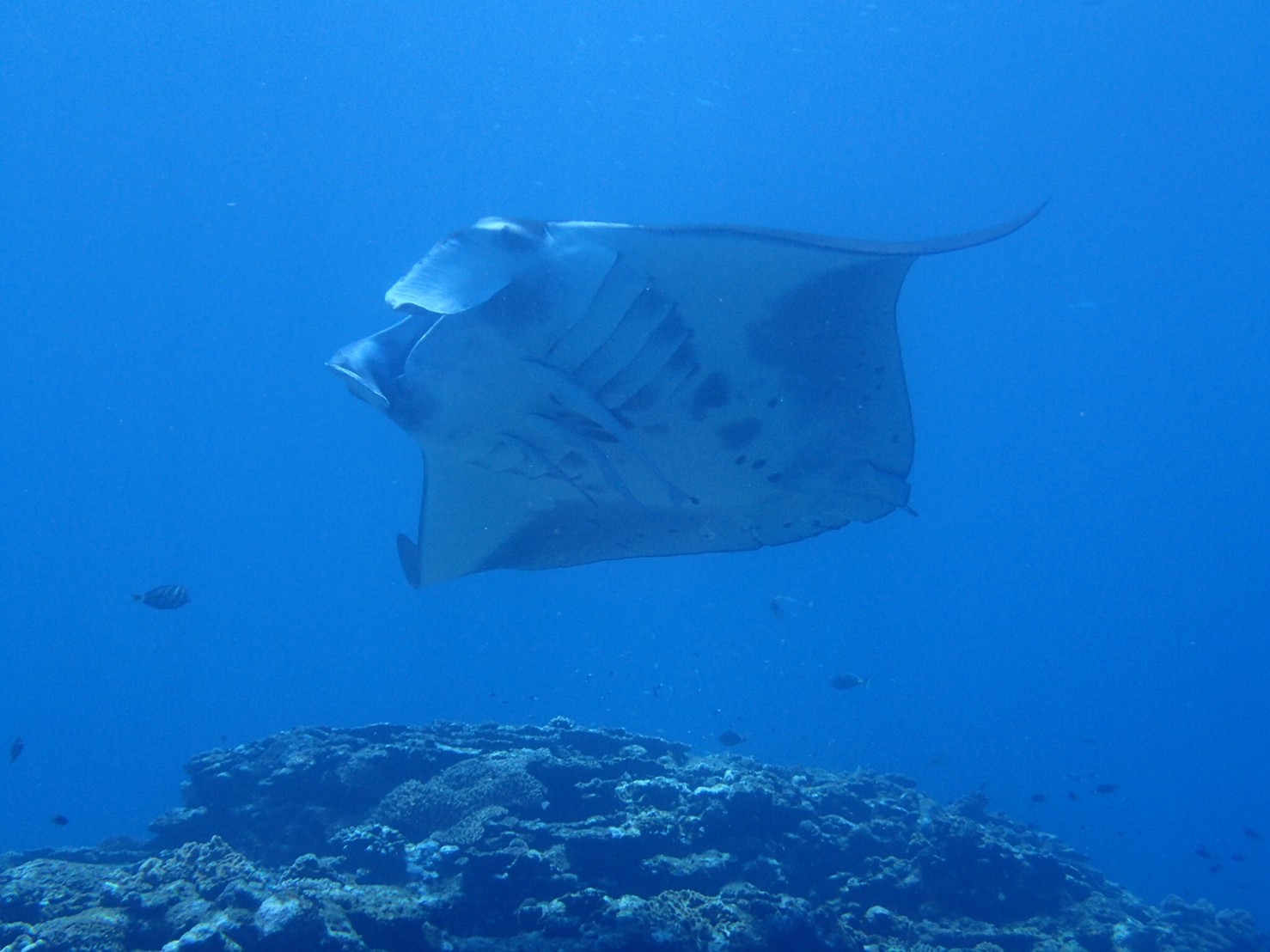
manta ray
1. What is a manta ray?
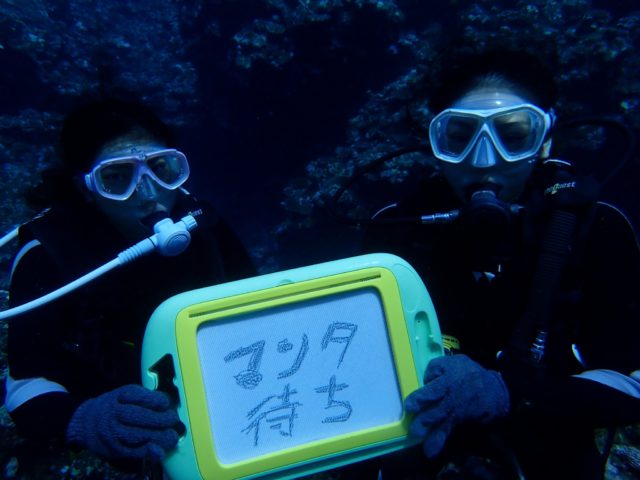
Manta is the Spanish word for cape, a name derived from its resemblance to a cloak.
Manta rays are a type of ray, belonging to the order of stingrays.
Until recently, it was thought to be one type of ray, the "one-eyed ray," but in 2009 it was discovered that this is actually two different types of ray.
One was originally known as the "onyx ray," while the other was named the "nanyo manta ray.
The difference between the two species is in the color of the area around the mouth.
When the Okinawa Churaumi Aquarium, Kaiyukan, and Shinagawa Aqua Stadium, which at the time were breeding the "Onyx ray," examined their own "Onyx rays," they found that all of them were not "Onyx rays," but the "Nanyou manta ray," which was considered a new species.
We also found that most of the manta rays seen on coral reefs and other reefs along the coast of the Okinawa region are "nanyo-umanta" rays.
Research has also shown that the manta rays seen in the open ocean on the Pacific side of the Japanese archipelago are "onyx rays.
The "Nanyou Manta" is a docile, curious, and friendly ray.
It is one size smaller than the "oniitomaki ray," measuring about 5 meters and weighing 3 tons.
It also has a lifespan of about 40 years.
The manta ray is the world's largest ray, and the nymph ray is the second-largest.
We now know that they live in groups and that there are two types of groups: blood groups and female groups.
Mantas have the largest brains of any fish species and are known for their extremely high intelligence.
Sometimes they have complex behaviors and, to my surprise, they can even identify humans.
Although manta rays are large, they do not feed on shellfish but on small plankton.
It opens its mouth so wide that one diver could easily fit inside, and sucks in the plankton with the entire seawater.
The swallowed seawater is expelled through the gills and the remaining plankton is eaten.
Mantas are not carnivores, so of course they do not eat people.
They also do not have poisonous needles to attack.
This is a major difference from rays with venomous stingers.
It also differs from other rays in that it has a long tail and no spine.
Thanks to their large size, they have few natural enemies, the only ones being large sharks and humans.
Their numbers are decreasing every year, and the "International Union for Conservation of Nature" has recognized the manta ray as an endangered species.
Individuals that are almost completely black are popular among divers as black manta rays.
Usually, the eyes of rays are on their backs, but the eyes of manta rays are on their anterior edges.
The mouth is also usually on the bottom for rays, but on the anterior end for manta rays.
Incidentally, manta rays can be identified by the pattern on their bellies, which can be completely black or have black spots.
Since this pattern is different in all individuals, it can be distinguished like a "fingerprint" in humans.
Mantas are fishes, but they mate and are also viviparous.
After a year of rearing in the mother's tummy, one or two animals are born at a time.
Baby manta rays are about 1 meter in size and weigh about 50 kg.
The manta ray has a large body, but its physical ability is much greater than it appears, and it can jump up to about 2 meters above the sea surface.
Sometimes they jump in large numbers in groups, and the power of their jumps is tremendous.
However, it is still unclear why they jump in such a way.
It is also a fish that is constantly migrating because it swims like a skipjack or tuna and breathes through its gills.
Incidentally, the similarly-named "Itomaki ray" is a slightly smaller ray, different from the "Oniitomaki ray" and "Nanyoumana," and can be found along the coast of southern Japan south of Chiba.
This one has a poisonous stinger and is not called a manta ray.
There are still many mysteries about manta rays, and there are many things that have yet to be elucidated.
Perhaps it is because they are such mysterious creatures that they attract so many people.
2. Manta rays on Miyako Island
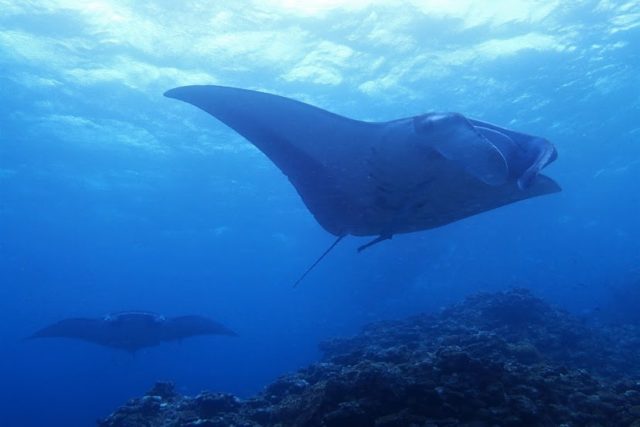
The shape of the island is like a giant manta ray, but the season to see manta rays is mainly from December to March, a four-month period.
You may see them in October and November.
Some divers have reported seeing manta rays during other seasons.
Many of the dive sites on the south coast of Miyako Island have never been dived, even by repeat visitors, because of the cold weather, especially when the north wind is blowing.
For most people, it seems that they have a strong image of diving in the summer, and there are fewer people in the winter.
The topography is different from that of Ifukube Island and Shimoji Island, making this a dive spot where manta ray watching can be enjoyed in a fresh atmosphere.
No cleaning stations have been found on Miyako Island like on Ishigaki Island, so for now there is no point where you can always see them.
On the other hand, although the probability is not high, it is possible to see them anywhere in the waters around Miyakojima.
It is possible to see manta rays every day, or on the contrary, not at all, and there are "good years" and "bad years" depending on the year, so it can be said that seeing manta rays depends on luck.
The manta ray cleaning station I mentioned earlier is called a root that is home to a large number of fish called the Honsome Wrasse, which eat garbage and parasites that attach themselves to the manta ray's body.
Roots, however, do not mean trees growing out of the ground, but rather areas that resemble mountains in the sea.
It is where the manta rays that come to visit to have their bodies cleaned by the Honsome Wagella gather.
In the past, it was not always possible to see manta rays on Kume Island as well as on Miyako Island, but since the cleaning stations were found, manta rays can now be seen at all times.
Manta rays can be seen on Miyako Island when they are feeding on plankton near the surface of the water.
These are the moments when plankton rises near the surface, riding the currents that rise up from the seafloor during the limited winter season.
Manta rays come to the surface to feed on this plankton.
A good day to target is when there are no waves, as plankton tends to stay on the surface of the water.
If you are lucky, you may witness them circling up and down or hovering several times over a high density of plankton.
On days when the waves are high, plankton scatters, so manta rays do not appear very often.
Sea turtles sometimes float near the surface, so if your timing is good, you may be able to see both sea turtles and manta rays at the same time.
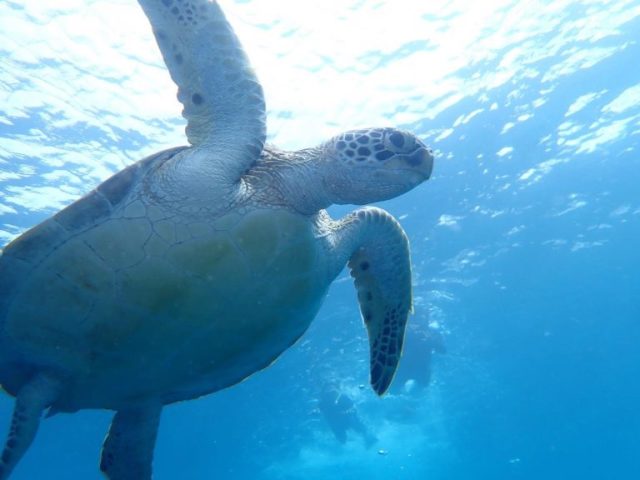
Another good time to spot them is when they are moving between feeding areas.
Mantas travel along a certain fixed route, so if you know the route, you may be able to see mantas on the move.
Manta rays on the move are not just moving, they are feeding on plankton, so their appearance points are also underwater.
During the spring breeding season in March and April, you may encounter a single female being chased by multiple males, and at this time, you may encounter a group of manta rays in a line.
3. What conditions?
During the season when manta rays can be seen, the water temperature is 20 to 22 degrees Celsius and the air temperature is 17 to 18 degrees Celsius.
The weather is such that it may be a bit chilly on the boat.
A 5mm wetsuit plus a hood, or a dry suit, or a windbreaker or boat coat on board would be good.
If you are well protected against the cold, you can dive comfortably.
4. Summary
In addition to manta rays, you may also see sea turtles and, if you are lucky, dolphins and whales.
Let's enjoy diving, hoping to see manta rays.
Manta rays can also be seen swimming under the beautiful 1,700-meter-long bridge that spans the distance between Miyako Island and Kushima Island, southwest of Miyako Island.
There have been many other sightings from fishing ports and underwater observation towers.
If you are lucky, you may see manta rays just by walking along the beach.
Miyako Island is full of souvenirs decorated with manta rays, such as T-shirts and accessories.
On bad weather days, you can buy manta goods at the souvenir shop,It will remain as a good memory after you return home.

